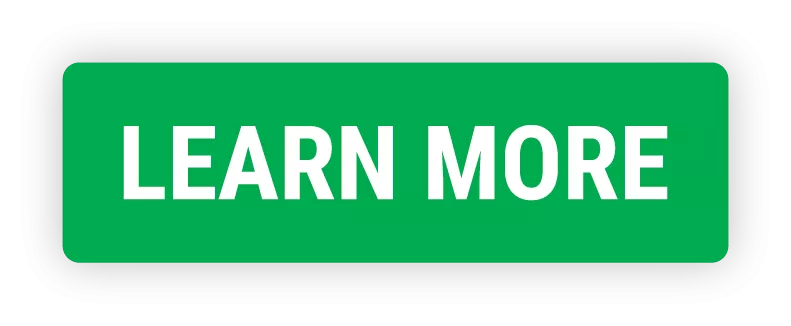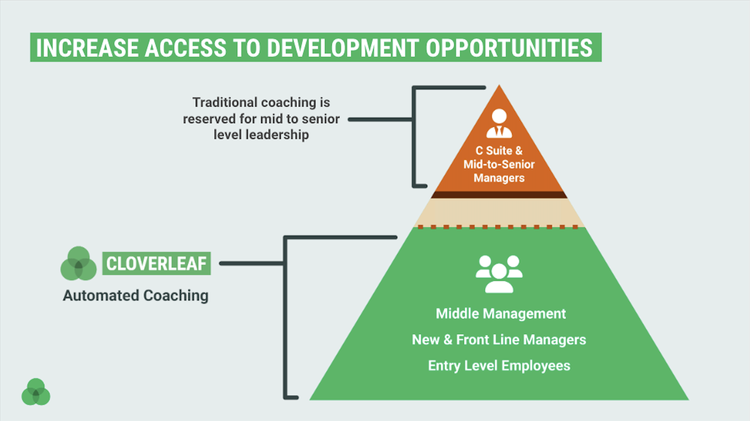As the warm months roll in, many people start to experience what’s commonly known as the summer slump. This phenomenon isn’t just about students forgetting what they’ve learned over the school year; it affects adults, too, manifesting as a drop in productivity and motivation in the workplace. This slump can disrupt carefully laid plans for talent development leaders and hinder progress on critical initiatives.
Understanding the summer slump and how to combat it can help individuals and organizations maintain momentum and achieve their goals even during these relaxed months. Scott Dust, the Chief Research Officer at Cloverleaf and a management professor at the University of Cincinnati brings extensive expertise in management and organizational behavior. Scott provides valuable insights into why the summer slump happens and what leaders can do to keep their teams motivated and productive. “The summer slump is real for adults as well. A summer slump typically entails either a loss in the quantity of productivity or a loss of quality,” says Scott Dust.
Follow along for a data-driven approach that uses personalized coaching insights to turn the seasonal dip into a period of strategic growth and engagement. Scott’s expertise reveals how targeted interventions and continuous development can not only mitigate the effects of the summer slump but also foster a more resilient and adaptable workforce.

What is the Summer Slump for Adults?
The summer slump is a well-documented phenomenon affecting adults in the workplace, characterized by a noticeable decline in productivity and motivation. Unlike the summer slide that impacts students, the summer slump in adults often manifests as both a reduction in the quantity of work produced and a dip in the quality of the work performed.
Research supports the reality of this slump, showing that workplace productivity can drop by approximately 20% during the summer months. Attendance at work also decreases by around 19%, and employees are about 45% more distracted during this period (The HR Team). These declines are primarily due to seasonal factors such as vacations, outdoor activities, and a generally more relaxed pace that summer brings.
For many employees, the warm weather and longer days lead to a natural desire to be outside and more active, which can conflict with workplace responsibilities. This seasonal shift in focus can result in fewer hours worked and a decrease in the effort put into tasks, as people may feel more inclined to relax and take time off.
Understanding these patterns is crucial for talent development leaders as it allows them to implement strategies that can help maintain productivity levels and keep teams motivated. By recognizing the signs of a summer slump and addressing them proactively, leaders can mitigate its effects and ensure that their teams continue to perform effectively throughout the summer months.

HUMAN SKILL PROGRAMS ARE HITTING LIMITATIONS...
Get Strategies To:
- Close the gap between learning and on-the-job application
- Overcome the tension of pausing productivity for development opportunities
- Experience done for you learning in the flow of work
- Stay ahead of human skill development
- Prove the ROI of your talent development programs

The Science Behind the Summer Slump
The summer slump can be better understood through the concept of entrainment, a phenomenon where an individual’s biological rhythms are synchronized with external environmental cues. Entrainment explains how our bodies and minds adjust to signals from our surroundings, influencing our productivity and motivation levels. This concept is pivotal in understanding why productivity can fluctuate significantly during different times of the year and even different days of the week.
Entrainment and Its Relevance to Weekly and Annual Productivity Cycles
Research into entrainment shows that our productivity is not constant but varies in predictable patterns based on weekly and annual cycles. For example, studies indicate that Mondays tend to be the most productive days of the week. This is because, after a weekend of rest, individuals typically feel more refreshed and motivated to tackle their tasks. As Scott Dust explains, Monday is the day that you are supposed to do planning and you’ve just had the weekend to relax, so you should be up and at ’em and ready to charge forward.
Conversely, productivity tends to decline as the week progresses. By Friday, the anticipation of the weekend leads to lower levels of motivation and focus. This weekly pattern of rising and falling productivity is a direct result of entrainment, where individuals respond to the societal norm of a five-day workweek followed by a two-day weekend.
Similarly, annual cycles also play a significant role. During the summer months, longer daylight hours and warmer weather signal a time for outdoor activities and vacations. These signals can subconsciously impact our work behavior, leading to decreased productivity and an increased desire to relax and take time off. Summers are typically when people do a lot of travel, spend more time outside, and enjoy longer days, notes Dust, emphasizing how these seasonal cues contribute to the summer slump.

How To Leverage Entrainment Insights To Align Work
By recognizing and adapting to these entrainment patterns, talent development leaders can implement strategies that mitigate the negative effects of the summer slump. This could include flexible working hours, encouraging outdoor breaks, or scheduling important tasks during peak productivity times. Leveraging these insights can help maintain productivity and motivation levels, even during the challenging summer months.
Make sure there’s a balance, and align the type of work with the right time. For example, some people are early birds, which is their chronotype, while others are night owls and do their best work later in the day. Most people fall somewhere in the middle. Knowing this, people should do deep work and meetings at times that suit their chronotype. Apply this mindset to fight the summer slump by aligning work types with the right times of the day and year.
For more information on circadian rhythms and their impact on productivity, you can refer to sources like the National Institute of General Medical Sciences (NIGMS) and Journal of Biological Rhythms (SRBR). Or you can take Cloverleaf’s free chronotype quiz to help you figure out your energy rhythm. These resources provide deeper insights into how biological rhythms influence workplace efficiency and how organizations can optimize work schedules accordingly.
Using Automated Coaching to Alleviate the Summer Slump
Organizations should just roll with it. Recognizing that we’re not robots, and you can’t program human beings to have the exact same productivity every day and throughout every season, suggests Dust. But there are tools that you can use to help individuals adapt to their unique situation. Automated Coaching™ is a strategic approach to maintain and even boost productivity during these months. According to Scott Dust, Embedding coaching into everyday tools means that support and guidance are always at hand, helping employees navigate the distractions and lower motivation levels typical of the summer months.
Automated Coaching provides coaching insights in the flow of work personalized to the individual’s situation. It democratizes coaching, making it scalable through technology. It starts with assessments like 16 types, Enneagram, DISC, and strength-based assessments to understand who you are.
The tool uses algorithms and expert insights to design interventions and suggestions based on your situation. Whether meeting with specific people or being part of a group, you get nudges on how to be the best possible you in that situation. This deep personalization helps employees understand their strengths and areas for improvement, to encourage a growth mindset, at all times throughout the year.
16 Types: Helps identify cognitive preferences, aiding in decision-making and information processing. By understanding how they process information and make decisions, employees can approach tasks in a way that aligns with their natural tendencies, leading to increased efficiency and effectiveness.
Enneagram: Explores core motivations and fears, offering strategies to manage behavior. Recognizing what drives them and what they fear allows employees to address underlying issues that may be hindering their performance, particularly during the less structured summer months.
DISC: Categorizes behavior to improve communication and collaboration. Understanding their own and their teammates’ behavior styles can significantly enhance communication and reduce misunderstandings, fostering a more cohesive and productive team environment.
Benefits of Personalized Coaching Insights
Different types of traits might align with different types of work throughout the year. For example, introversion vs. extroversion or openness to experience can influence the type of work people prefer. In the summer slump, extroverts might enjoy more networking, while those high in openness might embrace new experiences. Personalized coaching insights offer several key benefits that are particularly relevant during the summer slump:
Enhanced Individual Performance: When employees are aware of their cognitive preferences and motivations, they can structure their work in a way that maximizes their productivity, even when external distractions are high.
Improved Team Dynamics: During the summer, when team members might be working different schedules or remotely, understanding these dynamics becomes even more crucial for maintaining team cohesion and effectiveness.
Continuous Development: The summer can be an ideal time for personal development, as employees might have more flexibility to engage in learning opportunities.
By integrating coaching into daily routines, we can help employees stay focused and productive, turning the summer slump into an opportunity for growth. Cloverleaf is dedicated to developing essential human skills, such as emotional intelligence, resilience, and collaboration. Automated Coaching™ delivers micro-learning nudges that reinforce these real-life skills, helping team members navigate challenges, adapt to change, and work more collaboratively with their teammates. This focus on human skills not only improves individual performance but also drives organizational success.
In the hustle and bustle of the modern workplace, there’s a subtle undercurrent that often goes unnoticed, yet it holds immense power. We’re talking about psychological safety, a concept that, when nurtured, can transform the dynamics of a team.
Imagine a workspace where every opinion is valued, where you can voice your thoughts without the fear of being shot down. This is the essence of psychological safety. It’s more than just a feel-good factor; it catalyzes innovation and collaboration.
Harvard Business School Professor Amy Edmondson, a pioneer in this field, eloquently described psychological safety as a sense of confidence that the team will not embarrass, reject, or punish someone for speaking up. It’s about creating a space where diverse thoughts aren’t just tolerated but celebrated.
But why should organizations pay attention? Well, the numbers speak for themselves. A staggering report from Gallup revealed that only 8% of U.S. workers strongly believe that their opinions matter at work. This disengagement doesn’t just lead to a lackluster work culture; it costs the U.S. economy hundreds of billions of dollars every year.
Navigating the nuances of a workplace can be akin to walking a tightrope. As we begin to dig into what psychological safety is, it’s equally crucial to start by understanding what it isn’t. Let’s unravel the layers that obscure the path to a psychologically safe environment.

Exploring the Absence of Psychological Safety
It’s easy to mistake conformity for psychological safety. However, these are two distinct realms. A workplace absent of psychological safety is one where dissent is stifled, and the fear of retribution looms large.
Consider when disagreements are met with a cold shoulder or, worse, punitive measures. In such spaces, employees walk on eggshells, suppressing their authentic selves to fit into a mold crafted by unspoken norms and expectations.
The Undermining Forces
So, what undermines psychological safety? The culprits are often socialized pressures that subtly dictate how one should behave. These unwritten rules create an environment where members of a team feel compelled to don masks, concealing their thoughts and feelings in fear of negative consequences.
For instance, the belief that “leaders always have the answers” or “admitting a mistake is a sign of weakness” can lead to a culture where individuals are hesitant to voice their concerns or share ideas. This stifling atmosphere not only hampers creativity but also sows seeds of discontent, leading to burnout and disengagement.
The Cost of Silence
The repercussions of a lack of team psychological safety are profound. When employees are hesitant to share their insights or challenge the status quo, opportunities for innovation and improvement are lost. The silence that pervades such environments is not a sign of agreement but a symptom of a culture that hasn’t embraced the richness of diverse perspectives.
In essence, understanding what psychological safety is not helps us to appreciate its value better and guides us in fostering a workplace where every voice is heard, respected, and valued.
Q&A: Unraveling Psychological Safety
To delve deeper into the concept of psychological safety, let’s explore some frequently asked questions and identify signs that indicate the presence or absence of psychological safety in a workplace.
Q: What exactly is psychological safety?
A: Psychological safety refers to an individual’s perception of the consequences of taking an interpersonal risk. In a psychologically safe environment, employees feel comfortable expressing themselves without fear of retribution or judgment.
Q: Why is psychological safety crucial in the workplace?
A: Psychological safety fosters an atmosphere of trust and openness, leading to increased creativity, collaboration, and overall productivity.
Q: How can leaders foster psychological safety within their teams?
A: Leaders can encourage open dialogue, admit vulnerability, celebrate diversity, and provide training to ensure a psychologically safe environment.

HUMAN SKILL PROGRAMS ARE HITTING LIMITATIONS...
5 THINGS THIS FREE RESOURCE WILL TEACH YOU
- Close the widening gap between learning and on-the-job application
- Overcome the tension of pausing productivity for development opportunities
- Integrate learning so it is actually in the flow of work
- The evolution of human skill development
- What Automated Coaching™ is and how it works.

The Significance of Psychological Safety: A Cornerstone for Thriving Workplaces
Why Psychological Safety is Indispensable in the Workplace
Psychological safety is not merely a bonus in the workplace; it’s an essential element. It lays the foundation for trust, nurtures open communication, and cultivates team effectiveness. When individuals feel secure in sharing their thoughts and ideas, the workplace transforms into a vibrant space of creativity and collaboration.
Edmondson’s insights resonate deeply here. She emphasizes that the fear of speaking up can be so overwhelming that it inhibits cognitive processes. This apprehension stifles the creativity and innovation that are vital to an organization’s growth.
Google’s Project Aristotle: A Case Study in Team Psychological Safety
Google, in its quest to understand the dynamics of effective teams, embarked on an initiative known as Project Aristotle. The tech giant delved into a myriad of factors, from hard skills to soft skills, in an attempt to decipher the secret sauce behind successful teams.
The results were enlightening. Google found that the linchpin of high-performing teams was not their skills or resources but the presence of psychological safety. This environment of mutual respect and openness allowed team members to take risks without fear of backlash.
Psychological Safety Is A Differentiator
A 2015 study by Google underscores the importance of psychological safety, identifying it as one of the fundamental dynamics that set successful teams apart from the rest. In environments where psychological safety was prevalent, teams were more cohesive, innovative, and, ultimately, more successful.
The emphasis on psychological safety is not just about fostering a positive workplace. It’s about unlocking the full potential of every team member and, by extension, the organization itself. By understanding and championing psychological safety, businesses can cultivate workplaces that are not just productive but also places where individuals have an incredible employee experience.
5 Characteristics of a Psychologically Safe Workplace: Unveiling the Elements of a Supportive Environment
A psychologically safe work environment is akin to a nurturing ecosystem where ideas flourish, and individuals thrive. But what does this environment look like, and how can we identify it?
Problem-solving teams need two critical things…. The first is psychological safety and cognitive diversity (Harvard Business Review), underscoring the importance of an environment where diverse thoughts are welcomed and respected. Let’s delve into the characteristics that define such a safe space.
Characteristics of a Psychologically Safe Workplace
1. Open Communication: In a psychologically safe workplace, communication is transparent and open. Team members feel comfortable sharing their thoughts, knowing their voices are valued.
2. Respect for Diversity: Cognitive diversity is celebrated, and different perspectives are seen as assets that enrich discussions and decision-making processes.
3. Emphasis on Learning: Mistakes are viewed as opportunities for learning and growth rather than failures that warrant punishment.
4. Supportive Atmosphere: Employees support each other, fostering a sense of belonging and camaraderie.
5. Encouragement of Risk-taking: Innovation is encouraged, and interpersonal risk-taking is seen as a part of the creative process.
Identify Red Flags
While understanding the characteristics of a psychologically safe workplace is essential, it’s equally important to recognize the signs that may indicate a lack of such safety. Being proactive in identifying these red flags can help foster a supportive environment:
1. Reluctance to Speak Up: In a psychologically safe workplace, employees feel comfortable sharing ideas. A hesitation to voice concerns may indicate a lack of safety.
2. High Stress Levels: A supportive environment promotes well-being. Persistent stress among team members could signal a need for improvement.
3. Frequent Conflicts: Regular disagreements within teams may suggest an absence of psychological safety.
4. Low Employee Engagement: A psychologically safe workplace encourages active participation. Disinterest in team activities can be a red flag.
By being vigilant about these signs, organizations can take timely action to reinforce the elements contributing to a psychologically safe and supportive environment.
Providing Psychological Safety In A Hybrid Work Model
The shift towards remote collaboration and hybrid work models has introduced new challenges in maintaining psychological safety, making it essential to adapt and integrate supportive elements seamlessly.
4 Characteristics of a Psychologically Safe Remote Workplace
1. Consistent Check-ins: A psychologically safe workplace, whether remote or in-person, ensures regular interactions. Virtual meetings can help employees feel connected and valued.
2. Inclusive Communication: A supportive environment utilizes tools that ensure everyone, regardless of location, has an opportunity to contribute.
3. Virtual Team-Building: Activities that foster camaraderie and trust among remote teams are characteristic of a psychologically safe workplace.
4. Adaptability: A continuous effort to adapt to changing work trends is a hallmark of a supportive environment.
By integrating these characteristics, organizations can ensure that employees, regardless of their work setting, experience a sense of psychological safety and feel supported and valued, regardless of their location.

A Glimpse into a Psychologically Safe Workplace
Creating a psychologically safe work environment requires fostering the shared belief that individuals can be themselves, voice their thoughts, and contribute to their fullest potential. By understanding and supporting these characteristics, organizations can create workplaces that are not only productive but also profoundly enriching for every team member.
Joe’s Transformation
In a global financial institution, Joe, a dedicated software developer, was known for his heads-down work. However, assessments revealed that his natural strengths leaned towards leadership. Recognizing this, the team decided to let Joe lead a standing five-minute meeting every day. This small change allowed Joe to tap into his leadership skills and significantly shifted his engagement levels. He began actively participating in discussions, spreading his energy to other meetings. This supportive atmosphere led not only to an increase in Joe’s engagement but also positively impacted the team’s overall dynamics and productivity.
Michael and Sarah’s Improved Collaboration
Another story that stands out is Michael, a small business owner, and his employee, Sarah. In team meetings, Sarah consistently rebutted Michael’s suggestions, creating tension. However, some coaching helped Michael understand that Sarah’s questions were aimed at understanding, not challenging. When Michael approached Sarah with empathy and curiosity, the dynamic shifted. Sarah felt heard, and her questions strengthened teamwork.
Small changes, such as understanding one’s strengths and fostering open communication, can impact employee retention, personal relationships, and overall well-being.
Building Psychological Safety: A 4 Step Blueprint for Success
How to Foster Psychological Safety in the Workplace
Creating a psychologically safe workplace is not a one-time effort but a continuous journey. Leadership plays a pivotal role in this transformation. Leaders set the tone for the organization, and their actions and attitudes can either foster or hinder the development of psychological safety.
Simon Sinek, a renowned leadership expert, encapsulates this idea perfectly: A team is not a group of people who work together. A team is a group of people who trust each other. Trust is the bedrock of psychological safety, and leaders must actively work to cultivate it.
4 Actionable Steps for Leaders
1. Encourage Open Dialogue: Leaders should create an environment where open communication is encouraged. This means actively seeking diverse opinions and creating spaces for discussions. This aligns with the first stage of psychological safety, Inclusion Safety, as outlined by Timothy R. Clark in his book, The 4 Stages of Psychological Safety, where individuals need to feel accepted and included.
2. Admit Vulnerability: Leaders can set an example by admitting their mistakes and showing that it’s okay not to have all the answers. This fosters Learner Safety, the second stage defined by Clark, where team members feel safe to engage in the learning process, ask questions, and make mistakes.
3. Celebrate Diversity: Embracing cognitive diversity and different perspectives can lead to richer discussions and better problem-solving. This step is crucial in establishing Contributor Safety, the third stage, where individuals feel safe to apply their skills and contribute to the team’s objectives.
4. Provide Psychological Safety Training: Equip your team with the knowledge and tools they need. Amy Edmondson’s book, The Fearless Organization, and her TEDx talk on building a psychologically safe workplace are excellent resources. Additionally, training can help teams reach Challenger Safety, the fourth stage identified by Clark, where individuals feel empowered to challenge the status quo and propose innovative ideas.
From my own experience, adapting my leadership style was a journey of self-discovery. I realized that by being more open and encouraging my team to share their thoughts without fear, we were able to foster a sense of belonging and safety. This shift not only improved our team dynamics but also led to more innovative solutions.
Consider Pixar’s “Braintrust” Meetings:
Pixar Animation Studios offers a brilliant example of psychological safety in action. Their “Braintrust” meetings are designed to provide candid feedback on ongoing projects. The environment is structured to ensure that the feedback is constructive and free from hierarchical constraints, allowing for honest discussions and creative problem-solving.
Building psychological safety is an ongoing process that requires commitment from leadership and active participation from all team members. By implementing these steps and learning from successful examples, organizations can create an environment where everyone feels safe contributing, leading to more incredible innovation and success.
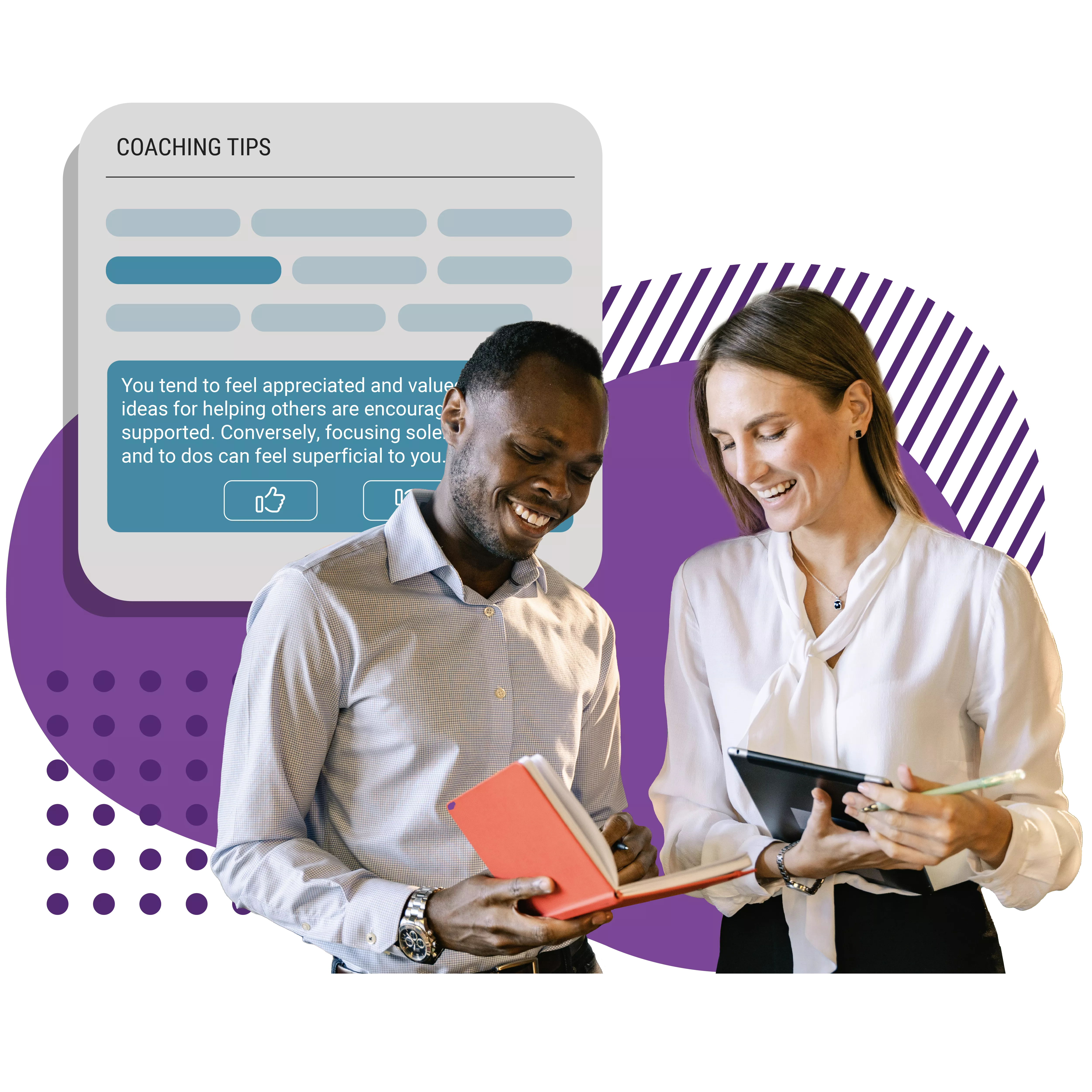
Integrating Tools to Enhance Psychological Safety
Cultivating a supportive workplace is a nuanced endeavor beyond leadership initiatives and open communication. It involves embedding continuous learning and insightful tools into everyday work experiences. For instance, platforms like Cloverleaf can seamlessly integrate into daily workflows, offering insights to improve communication and collaboration among teammates.
In a supportive work culture, continuous learning becomes the norm. By understanding themselves and their colleagues better, individuals can foster an environment that thrives on mutual respect and openness. This shift is not just about personal development; it can shift the entire culture of organizations. When equipped with the right insights, teams can unlock fulfilling and productive dynamics to reap the benefits of psychological safety.
Accessibility to intuitive and actionable data is also crucial. Tools that provide easy-to-understand insights empower individuals and teams to make informed decisions, contributing to a more supportive and inclusive environment. These tools can be subtle yet powerful facilitators in fostering a culture where every voice is valued and authenticity is celebrated.
In essence, the journey toward a psychologically safe workplace is enriched by practices and tools that encourage understanding and open communication. By integrating platforms that offer insights into individual and team dynamics, organizations can take a holistic approach to building a culture where individuals feel valued, heard, and encouraged to be their authentic selves.
Conclusion: The Path Forward
In the dynamic and constantly shifting environment of modern workplaces., prioritizing psychological safety is not just a necessity but a commitment to fostering a culture of trust, innovation, and collaboration. As we navigate the complexities of team dynamics, leadership roles, and organizational goals, psychological safety is a beacon of hope.
Embracing Vulnerability
Brené Brown, a renowned researcher and storyteller, encapsulates the spirit of psychological safety when she notes, “Vulnerability is not winning or losing; it’s having the courage to show up and be seen when we have no control over the outcome.” This sentiment resonates deeply with the ethos of a psychologically safe workplace. It’s about creating an environment where vulnerability is seen not as a weakness but a strength, where individuals are encouraged to bring their authentic selves to the table.
The path forward requires a commitment to continuous learning and development. Organizations must actively seek ways to embed psychological safety into their cultures, ensuring that it permeates every interaction, decision, and strategy. It’s about recognizing that the journey toward a psychologically safe workplace is ongoing and requires consistent effort.
A Call to Action
As we conclude our exploration of psychological safety, the call to action is clear. Organizations must prioritize creating environments where employees feel seen, heard, and valued. By doing so, we pave the way for workplaces that are not just productive but also nurturing spaces that foster creativity, innovation, and mutual respect.
In essence, the path forward is one of commitment and action toward ensuring that psychological safety is not just a buzzword but a lived reality in our workplaces. By embracing vulnerability, encouraging open dialogue, and continuously striving for improvement, we set the stage for a future where every workplace is a haven of psychological safety and collaborative success.
Career pathing, often nestled within the broader concept of career development, stands out as a nuanced strategy pivotal for organizational effectiveness. Today, as employees discern between merely holding a job and advancing in a fulfilling career, companies grapple with the dual challenge of aligning talent aspirations with organizational trajectories.
The essence? It’s more than just mapping professional growth; it’s about weaving an individual’s vision into the fabric of the company’s future.
Career pathing is a symbiotic relationship between employees channeling their skills and desires in ways that resonate with the organization’s direction. It’s this cohesiveness that can galvanize teams, spark innovation, and lay the foundation for a thriving culture.
In this article, let’s demystify career advancement, illuminating its role in bridging the aspirations of individuals with the strategic direction of your business to foster an environment where mutual growth is not just encouraged but inevitable.
KEY TAKEAWAYS
- Navigating Career Nuances: Employee development aligns individual aspirations with organizational vision, bridging ambitions and company success.
- Impact of Career Pathing: A structured professional development framework yields business benefits, from being profitable to strengthening new skills within your team.
- Crafting the Right Framework: An effective career path requires a clear structure and technology, from organizational charts to e-learning platforms.
- Challenges Aren’t Roadblocks: Issues like resistance to change can be navigated with transparent communication and manager training.
- Building a Culture of Growth: Beyond strategies, a career pathing program should be ingrained in a company’s culture, emphasizing mutual growth and learning.

Career Pathing Vs. Career Development: Navigating the Nuances
Understanding the nuances between career pathing and career development is crucial for both organizations and employees. The distinction, though subtle, plays an imperative role in how individuals plan their career trajectories within and outside an organization.
What Is Career Pathing?
Career pathing within an organization means aligning an individual’s skills, talents, and desired areas of growth to the talent and business priorities of the organization. It’s about finding the intersection between an employee’s skills, talents, and desired growth areas with the company’s present and future needs.
This means the ways in which one wants to develop, move up, take on new responsibilities, etc., also have to match up with where the organization is headed, its current needs, and its anticipated needs.
3 Key Career Mapping Considerations:
- Strategic Alignment: How do an individual’s growth aspirations align with the company’s direction?
- Organizational Fit: Are there current or anticipated roles that match the individual’s desired path?
- Skill Evolution: What skills or competencies must the employee develop to fit into these roles?
For instance, if an employee is keen on stepping into a leadership role, career pathing would involve understanding whether there are leadership opportunities within the organization. Likewise, if someone is contemplating a shift in function, the question becomes whether lateral moves are possible and beneficial.
Career Development: A Broader Horizon
Career development, in general, may refer to an individual who is looking at developing their career holistically and independently from a specific organization. While these terms tend to be used interchangeably at times, the distinction here is important.
While career pathing is organization-centric, career development adopts a more holistic perspective, independent of any specific organization. It’s about the larger journey of a professional, which could span multiple roles, organizations, or even industries.
Consider an individual who envisions a future working independently or transitioning to a larger enterprise for more expansive growth opportunities. This vision falls under the umbrella of career development. Such aspirations might not always align with the immediate objectives of their current organization, potentially leading to misaligned expectations.
Aligning Individual Aspirations with Organizational Objectives
Employees may find themselves at a crossroads when their career aspirations don’t sync with the needs of their organization. This misalignment can lead to frustration and a sense of stagnation. Hence, it’s crucial for both parties to have transparent conversations.
For employees, it’s about introspection and open dialogue:
- Am I looking for growth opportunities strictly within my current organization, or am I open to broader horizons?
- How can I better align my aspirations with the organization’s needs?
- If I am interested in a different function, can I move laterally?
- What potential roles or functions can I explore to maximize my impact on the team and the broader company?
On the flip side, organizations should encourage performance management conversations, ensuring employees feel valued, understood, and aligned with the business’s trajectory. This approach ensures mutual growth and strengthens organizational culture and employee retention.
In summary, while career pathing and career development share overlapping territories, discerning the differences is crucial. It paves the way for more informed decisions, clearer communication, and a harmonious balance between individual aspirations and organizational objectives.

HUMAN SKILL PROGRAMS ARE HITTING LIMITATIONS...
5 THINGS THIS FREE RESOURCE WILL TEACH YOU
- Close the widening gap between learning and on-the-job application
- Overcome the tension of pausing productivity for development opportunities
- Integrate learning so it is actually in the flow of work
- The evolution of human skill development
- What Automated Coaching™ is and how it works.

The Tangible and Intangible Benefits of Career Pathing
A Catalyst for Organizational Growth
Career pathing isn’t just a buzzword thrown around in human resources. It’s a strategic initiative that goes beyond employee well-being and satisfaction, driving critical business outcomes. When implemented effectively, career pathing can translate into significant bottom-line benefits, transforming how an organization thrives in an ever-competitive market.
Career Pathing: Beyond Just Retention
1. Aligning Vision with Action: Organizations in the modern era are facing an evident demand: the workforce is seeking more than just a paycheck. People want and expect development opportunities, meaningful work, empowering cultures, and a supportive environment that aligns with their core values. Career pathing can address this demand head-on, allowing employees to envision a brighter future within the organization, subsequently fostering loyalty and commitment.
2. Building Organizational Loyalty and Trust: Personal and professional relationships thrive on mutual trust and loyalty. Imagine having an ally, someone you can wholeheartedly trust and who champions your cause. In an organizational setting, when employees feel this profound sense of loyalty, their commitment and dedication to the company’s success know no bounds. They’re more likely to go the extra mile, not out of obligation, but out of genuine care and alignment with the company’s vision.
3. Tangible Business Outcomes: While fostering a positive work culture and enhanced employee morale are noteworthy, career pathing also delivers tangible benefits:
- Profitability Boost: Engaged employees, driven by a clear career path, often exhibit higher productivity levels. Higher productivity means better service or product quality, ultimately leading to increased profitability.
- Reduced Turnover: With a clear career trajectory, employees are less likely to seek opportunities elsewhere. This reduces recruitment costs and can increase employee engagement.
- Bridging Skill Gaps: By identifying the desired paths of employees, organizations can offer targeted training and development programs. This caters to individual growth and addresses the skill gaps within the company.
4. Creating an Empowering Environment: A company that values and prioritizes career pathing is often perceived as forward-thinking and employee-centric. This perception can create an empowering environment where leaders are engaged, communication is transparent, and individuals feel valued. Personal accountability, performance, and engagement naturally soar within such an environment.
Career pathing stands at the intersection of individual aspirations and organizational growth. Its benefits, both tangible and intangible, are hard to overlook. As organizations brace themselves for the challenges of the modern world, career pathing can help illuminate the way towards mutual success and growth.
Crafting a Comprehensive Career Pathing Framework
The Foundation of Employee Satisfaction
In an ever-evolving workplace, a structured career pathing framework is no longer an option but a necessity. Such a framework doesn’t merely provide a direction; it intertwines employee aspirations with organizational goals, driving a direct link to job satisfaction and overall employee well-being.
7-Step Career Pathing Framework
1. Starting from the Back: Organizational Chart and Job Descriptions
Before diving into individual career paths, aligning the organization’s structural underpinnings is crucial. An updated organizational chart provides clarity on the hierarchy, team alignment, and the available progression routes. Likewise, having a consistent framework for job descriptions ensures that expectations are clear from the outset.
Each job description should clearly list the competencies vital for success. This doesn’t only include technical skills but also the softer, often overlooked interpersonal and leadership skills. Recognizing that leadership is as much about people management and group dynamics as expertise ensures holistic career development.
2. Visualizing Departmental Career Progressions
By mapping out specific progressions within departments, employees gain a visual understanding of their potential growth path. This visualization is pivotal for motivation and clarity. Moreover, showcasing how skills acquired in one function can be transferable to another promotes flexibility and cross-functional growth. For instance, the competencies honed in marketing operations might seamlessly translate to a role in marketing analytics.
3. Aligning with Learning and Development
Once the career paths are outlined, it’s essential to compare them with the organization’s current learning and development initiatives. Does the company offer sufficient opportunities to equip employees with both the hard and soft skills necessary for role advancement? Identifying gaps and ensuring the alignment of developmental opportunities with career objectives is paramount.
4. Onboarding with a Vision
A new employee’s introduction to the organization should be about their current role and the company’s future potential. An onboarding process that aligns with career pathing objectives sets a precedent for growth from day one.
5. The Drive for Continuous Upskilling
In today’s rapidly changing corporate landscape, static skill sets quickly become obsolete. Emphasizing the importance of continuous upskilling and certifications—achieved through avenues like webinars, workshops, and courses—ensures employees remain agile and relevant.
6. Effective Communication and Training
A framework is only as good as its implementation. Regularly communicating the importance of career pathing and training both leaders and individual contributors on how to facilitate related conversations is critical. Establishing a dedicated leader or team to oversee the framework’s execution and training ensures consistency and commitment.
7. Evaluating and Iterating the Framework
The career pathing framework shouldn’t be static. Regular evaluations through methods like pulse surveys help understand its effectiveness and improvement areas.
Questions to consider include:
- Are leaders actively using it?
- Do employees understand and resonate with it
- How frequently is it highlighted in company-wide communications?
A meticulously crafted career pathing framework is more than just a tool—it’s a commitment. A commitment to employees that their growth matters and a pledge by the organization to provide clear, achievable paths towards that growth. In this mutual journey of development, both parties flourish, resulting in a harmonious, productive, and future-ready workplace.
Strategies for Effective Career Pathing: Leaders and Employees
Two-Way Street of Career Pathing
Navigating one’s career path is a collaborative effort. While organizational strategies shape the general direction, individual desires, and aspirations add depth and meaning to this journey. Effective career pathing necessitates a blend of top-down leadership directives and bottom-up employee initiatives.

Career Pathing Best Practices for Leaders…and Employees!
1. For Leaders: Coaching Beyond the Framework
Having a robust career pathing framework is foundational, but it’s the personal touches leaders add that truly make a difference. Adopting a coaching approach means actively listening, especially when employees express concerns or seek challenges.
- The Power of Questions: Asking thought-provoking questions can unlock hidden desires and goals. Questions like, What would you love to explore in your role? or, Which of your skills do you believe is underutilized? can shed light on unseen growth areas.
- Listening Beyond Conversations: As projects or new initiatives surface, astute leaders match these opportunities with employee talents and career goals, ensuring alignment and fulfillment.
2. For Employees: Charting Your Path
While organizational support is crucial, taking charge of one’s own career progression is equally important. Here’s how:
- Vocalize Your Aspirations: Use every interaction, from one-on-one meetings to skip-level discussions, to voice your growth desires.
- Be Proactive: Even if there’s no formal pathing structure, initiate the dialogue. Explore both internal and external opportunities to grow.
- Feedback is Gold: Regularly seek feedback, embrace diverse perspectives, and hone your ability to adapt and evolve.
- Networking: Building and maintaining relationships within the organization is paramount. An insightful conversation today could unlock a door tomorrow.
3. The Role of Mentorship
Mentorship programs offer invaluable guidance, helping employees navigate their careers with the wisdom of someone who’s been there. Such programs not only provide direction but also strengthen bonds within the organization.
4. Performance Reviews with a Career Focus
Regular performance reviews shouldn’t be just about past accomplishments. They should be forward-looking, with career paths as core discussion points for mentoring and guiding employees toward their next milestones.
Fostering a Culture of Continuous Career Growth
The Pivotal Role of Organizational Culture: A company’s ethos significantly impacts career pathing. It’s an invisible force that can either fuel aspirations or stifle them. It’s imperative for organizations to foster a culture where career growth isn’t just encouraged—it’s ingrained.
Cultivating A Learning Culture
In an environment that prizes learning, career pathing is not an added benefit—it’s a natural outcome. Such a culture views individual, leader, and team growth as indispensable investments.
- Reflection of Learning: When an organization truly values learning, career pathing becomes second nature. It’s not merely a structured process but a manifestation of the company’s commitment to individual growth.
- Satisfaction and Success: A learning culture and tangible growth opportunities escalate job satisfaction. And as employees flourish, it’s mirrored in positive business outcomes.
For an organization to thrive, both leaders and employees must share the commitment to continuous growth. With the right practices, mentorship, and an unwavering focus on learning, career pathing can become the compass guiding everyone towards their best selves.
4 Challenges and Solutions in Implementing Career Pathing
Navigating the Roadblocks
Just as any journey is bound to face obstacles, the road to effective career pathing isn’t always smooth. Organizations often confront myriad challenges—from ingrained resistance to evolving dynamics. Identifying and preempting these challenges with effective solutions is key to creating a robust career pathing framework.

1. Resistance to Change
Challenge: One of the most common barriers is resistance to change, especially in established organizations with deep-rooted processes and hierarchies. Employees and even leaders can be apprehensive about shifting paradigms.
Solution: Cultivate a culture of adaptability. Begin with awareness campaigns, workshops, and discussions to underline the benefits of career pathing—for the individual, teams, and the organization as a whole. Also, share success stories where career pathing made a positive difference.
2. Lack of Clear Communication
Challenge: Even the best-laid career pathing plans can become convoluted without clear communication. Ambiguity can lead to misunderstandings and missed opportunities.
Solution: Establish open channels of communication. Regularly update all stakeholders about career pathing’s developments, benchmarks, objectives, and advantages. Foster an environment where employees feel comfortable discussing their career aspirations and uncertainties.
3. Inadequate Manager Training
Challenge: Managers play a pivotal role in facilitating career pathing. However, without proper training, they might struggle to guide their team members effectively.
Solution: Invest in comprehensive training programs for managers, equipping them with the tools and knowledge to steer employee career pathing discussions, understand their aspirations, and match those with organizational needs. To help you start, check out the post: The Managerial Readiness Playbook.
4. Misalignment of Personal and Organizational Goals
Challenge: There can be situations where an employee’s career aspirations don’t align with the organization’s immediate needs or long-term vision.
Solution: While it’s crucial to prioritize organizational objectives, it’s equally important to value individual employee’s aspirations. Create flexible career pathing frameworks, allowing some level of adaptability to cater to unique talents and goals.
The Role of Technology: Making Career Pathing Seamless
Technology can be a game-changer for designing career pathing opportunities in this digital age.
- Data-Driven Insights: Use analytics tools to identify skill gaps, track employee progress, and predict future skill requirements. This not only adds precision to the process but also helps in making informed decisions.
- Digital Roadmaps: Interactive platforms can visualize potential career paths, allowing employees to explore different trajectories, understand required skills, and plan accordingly.
- E-learning Platforms: As upskilling is integral to career planning, integrating e-learning platforms can facilitate continuous learning, ensuring employees are always ready for the next step.
- Feedback Mechanisms: Implement technology-enabled feedback tools to gather real-time insights on the effectiveness of the career pathing process, facilitating continuous improvement.
While challenges in implementing career pathing are inevitable, they aren’t insurmountable. With a proactive approach, clear communication, and the leverage of technology, organizations can create a dynamic and responsive career pathing framework that resonates with both their vision and their employees’ aspirations.
Charting the Course to Organizational Excellence
Navigating the intricate landscape of career pathing might seem daunting, but its rewards are manifold and far-reaching. By understanding the pivotal role of a structured career pathing framework, organizations not only unlock doors to heightened employee satisfaction but also pave the way for increased productivity, reduced turnover, and a robust employer brand.
But it’s not merely about setting up a system; it’s about fostering a culture. A culture where growth is not a mere aspiration but an ongoing journey. Where leaders listen actively, and employees champion their career ambitions. Where challenges are viewed as stepping stones, and technology is harnessed to streamline, simplify, and magnify the process.
In the end, career pathing is more than just a strategic tool—it’s a testament to an organization’s commitment to its people. It signifies a promise that every individual’s career voyage matters and that the organization is a willing and proactive co-traveler in that journey.
In an era where the workforce landscape is rapidly shifting, the essence of the modern workplace is no longer solely defined by the tasks we perform or the titles we hold. More than ever, our experiences define it, the connections we forge, and the respect and voice we’re granted within our organizations.
The transformation we’re witnessing is not only about technological advancements or new business models. It’s about the people—their feelings, aspirations, and the environments where they spend most of their waking hours. And whether their organizations realize the impact of employee listening efforts.
While statistics paint a vivid picture of job turnover, the reasons behind it, and how to reduce its impact, they only scratch the surface. Behind every number is a narrative of an individual seeking more than just a paycheck—a quest for respect, inclusivity, and a meaningful role within their organization.
The age-old adage, “People don’t leave jobs, they leave managers,” has never been more pertinent. But this sentiment is evolving. Today, it’s not just about the manager—it’s about the entire workplace ecosystem.An ecosystem where employee engagement strategy and experience are not mere buzzwords but fundamental building blocks of a successful and sustainable business.
It’s a time when organizations are called to do more than provide jobs. They are entrusted with crafting experiences and, more importantly, genuinely listening to their most valuable asset—their employees.
As we delve deeper into the essence of employee listening, we’ll uncover its profound significance in shaping this new era of work and why it’s more critical than ever for organizations to hear, actively respond, and adapt.
KEY TAKEAWAYS
1. The Depth of Employee Listening Matters: Beyond merely collecting feedback, true employee listening involves intentionally understanding and acting on employee sentiments.
2. Understanding What Employees Value Is Imperative: Today’s employees seek more than just a paycheck; they value respect and a sense of belonging. Organizations that listen effectively benefit from higher retention rates, greater productivity, and a stronger brand reputation.
3. Strategic Listening Is Ongoing: Successful employee listening isn’t about one-off surveys. It demands a systematic approach involving real-time feedback mechanisms, followed by demonstrable actions.
4. Tailor Your Strategy For Your Organizational Needs: While the importance of listening is universal, the methods must be personalized to fit an organization’s unique culture and objectives.
5. The Leadership’s Role Is Paramount: For any listening initiative to be successful, leaders need to be engaged, responsive, and self-aware.

Understanding Employee Listening
What Is Employee Listening?
Employee listening in a conscious and intentional effort to capture and respond to employee feedback regularly. This commitment goes beyond merely deploying surveys or periodic feedback sessions. Because a survey, no matter how comprehensive, is only as valuable as the actionable insights derived from it and meaningful action to follow up in response to them.
The Disconnect in Current Workplaces:
A silent disconnect often festers within modern workplaces amid the bustling hallways and busy schedules. Recent statistics are alarming—The Pew Research Center highlighted that a staggering 57% of individuals who resigned from their roles cited feelings of disrespect as their primary reason.
The Workforce Institute’s global survey 2021 sheds further light on this issue, revealing that 86% of employees believe their concerns and voices are not heard fairly or equally in their workplaces.
Implications of Neglecting Your Employee’s Voice:
Ignoring the employee voice doesn’t just result in attrition or dissatisfaction—it breeds an environment where innovation is stifled, morale is consistently low, and the organization’s growth is stunted. In such a climate, not only does talent drain become a recurrent issue, but the fabric of the organization’s culture begins to erode. When employees don’t feel valued or heard, they often retreat into shells of minimal effort, contributing only what’s necessary.
The ripple effects are far-reaching, from burnout to deteriorating customer service. And in an era where brand reputation is intricately linked with employee advocacy, this neglect can significantly impact an organization’s external image and customer trust.
The Imperative for Employee Listening in Today’s Age
A. Emotional and Practical Factors
The Shift from Paycheck-Driven Jobs to the Quest for Respect and Meaningful Work
There was once a time when most of the workforce clocked in and out, primarily motivated by the prospect of a monthly salary. While remuneration remains critical, today’s employees, influenced by socio-cultural shifts and increasing global connectivity, crave more than just monetary rewards. They seek respect, inclusivity, and the chance to contribute to a meaningful purpose. Platforms like LinkedIn and various podcasts often showcase stories of professionals transitioning from high-paying roles to ones that align better with their values and aspirations. Such narratives underscore the magnitude of this shift in employee expectations.
The High Costs of Turnover and the Financial Imperative to Listen
Turnover is not just an HR term; it’s a significant business concern. Beyond the direct costs of hiring and onboarding, there’s a loss of institutional knowledge, a potential decline in team morale, and disruption to project timelines. All these factors translate to dollars. In today’s era, with platforms amplifying employee perceptions and experiences, organizations cannot simply replace employees; they must retain them. An essential step toward retention? Listening. It’s no longer just about HR leaders understanding employee needs; it’s about business leaders realizing that listening directly impacts the bottom line.
B. Call to Action
Highlighting the Responsibility of Organizations to Act and Bridge the Gap
The data speaks clearly: many employees feel their voices are stifled or unheard. In an age where transparency is highly valued and platforms like Glassdoor expose organizational cultures, it’s more critical than ever for organizations to address this disconnect.
The call isn’t merely for annual engagement surveys or one-off focus groups. It’s a call for continuous employee listening strategies embedded in the fabric of the employee life cycle. It’s about making feedback part of decision-making processes, benchmarking against best practices, and ensuring that action plans derived from feedback are effectively communicated and implemented. Organizations, stakeholders, and business leaders must realize that effective employee listening isn’t just an HR initiative—it’s a business imperative.

HUMAN SKILL PROGRAMS ARE HITTING LIMITATIONS...
5 THINGS THIS FREE RESOURCE WILL TEACH YOU
- Close the widening gap between learning and on-the-job application
- Overcome the tension of pausing productivity for development opportunities
- Integrate learning so it is actually in the flow of work
- The evolution of human skill development
- What Automated Coaching™ is and how it works.

Constructing an Effective Employee Listening Strategy
In the labyrinth of organizational growth and sustainability, the employee’s voice emerges as a guiding beacon. It’s not just about what employees say but how organizations interpret and act upon this feedback.
Crafting a robust employee listening strategy is more than just a nod to modern HR practices; it’s an acknowledgment of the immense value that employees bring to the table, not just in labor but also insights, perspectives, and innovative ideas.
In an age dominated by digital transformation and rapidly evolving work paradigms, understanding and implementing effective listening strategies can mean the difference between a thriving organization and one merely surviving.
As we delve into this section, we’ll explore the pivotal components of such a strategy, looking beyond traditional approaches and emphasizing the importance of action, transparency, and continuous evolution.
A. Move Beyond the Annual Survey
Continuous Listening Tools:
Once the cornerstone of employee feedback, the annual survey is no longer enough. In an era of immediacy, tools like pulse surveys, one-on-one meetings, engagement surveys, and performance conversations have become paramount. These instruments allow organizations to tap into the real-time sentiments of their employees, offering insights that can shape strategies on-the-fly.
The Role of Real-Time Feedback:
A constant stream of feedback is invaluable to inspiring collaboration in the workplace. It can accurately reflect workplace sentiments and enables organizations to act quickly, preventing minor concerns from snowballing into major organizational issues.
B. Transform Feedback Into Action
Importance of Ownership, Analysis, and Actioning of Feedback
Gathering feedback is only half the battle. The true challenge lies in its analysis and subsequent action. Organizations must have transparent systems and dedicated teams to collect and act upon feedback.
The Critical Aspect of Showing Employees Their Feedback Matters
Employees need to see tangible outcomes from the feedback they provide. This validates their concerns and encourages further participation in feedback loops, leading to a more engaged and invested workforce.
C. Measure The Reporting and Practice Accountability
Transparency in Results and Initiatives
Openness is key. Employees should be privy to what their feedback has led to – what changes are being implemented, what concerns are being addressed, and which areas still require attention.
Allocating Budget and Resources Towards Actionable Insights
An organization must allocate a budget and resources for feedback to transition into actionable steps. This financial commitment underscores the importance of a continuous listening strategy in organizational decision-making.

Case Study: Microsoft’s Employee Listening Evolution
Like many leading organizations, Microsoft initially centered its HR metrics around employee engagement. But, recognizing the evolving needs of the modern workforce and the limitations of traditional engagement metrics, they pivoted.
Microsoft defines employee thriving as “to be energized and empowered to do meaningful work.” Their journey moved beyond mere engagement, focusing on a more holistic measure of employee well-being and satisfaction, which they encapsulated in the term “thriving.”
Case Study Take-A-Ways
Microsoft Leveraged Survey Data for a Holistic Employee Experience:
Microsoft’s approach stood out because it didn’t treat feedback as a passive data point. Instead, they used it as a catalyst for change. Integrating employee feedback with their organizational strategies ensured that the insights gained directly informed their policies and practices. This integration was evidenced by their transparent leadership communications and their iterative changes in response to feedback.
Emphasis on Fostering a Growth Culture and Employee Thriving:
Microsoft’s transformation wasn’t just conceptual but actionable. Their commitment to “thriving” was demonstrated by tangible initiatives. From tailored professional development programs to team-building exercises, Microsoft responded proactively to feedback, demonstrating their dedication to fostering an environment where employees could flourish.
Lessons for Other Organizations
Microsoft’s approach to employee listening and its subsequent actions provide valuable lessons.
Their transformation underscores:
1. The Power of Continual Feedback: It’s not about a one-off survey but an ongoing conversation.
2. The Imperative for Action: Feedback without follow-through is futile. Microsoft’s success came from its responsiveness and willingness to adapt based on the insights gained.
3. The Holistic View of Employee Well-being: Beyond mere job satisfaction, the focus should be on overall well-being and creating environments where employees can thrive personally and professionally.
Other organizations, irrespective of their size or domain, can adopt and adapt these lessons, ensuring that their strategies are employee-friendly and conducive to long-term organizational success.
The Multifaceted Impact of Employee Listening
The true heartbeat of an organization lies not in its products or services but in its people. As the corporate world awakens to this realization, employee listening emerges not as a mere trend but as a cornerstone of sustainable success.
This practice, though simple in its intent, holds transformative power. From bolstering internal morale to influencing external brand perception, listening to your employees bridges gaps and forges pathways to possibility.
Understanding the strong connection between the employee experience and the customer experience is essential. When employees invest time, energy, and resources into listening to and responding to their employees directly impacts internal service quality.
A. Employee Engagement and Discretionary Effort
Feeling Valued and Its Impact on Effort:
When employees believe their voices matter, they transition from passive participants to active contributors within the organization. They are more likely to exhibit discretionary effort—the extra energy and dedication they might otherwise withhold due to disengagement or dissatisfaction. Such effort is about working harder and more intelligently, innovating, and proactively addressing challenges, leading to improved organizational performance.
B. Customer Experience and Business Growth
The Ripple Effect of Employee Contentment:
One of the most potent manifestations of employee listening is its direct correlation to customer service quality. Employees who feel heard and valued are likelier to give customers the same level of attention and care. Given the importance of maintaining an impressive online reputation, ensuring top-tier credibility has never been more crucial.
As companies prioritize and invest in their most significant asset—their people—they indirectly set a standard for how employees should engage with customers. Engaging employees can be a game-changer in a world where a single review can significantly influence consumer behavior.
C. The Financial Argument
The High Cost of Neglect:
Beyond the intangible benefits of improved morale and engagement, concrete financial implications are tied to employee listening. Retaining top talent reduces the costs associated with hiring and training new personnel. Enhanced productivity boosts profitability, and superior customer service attracts and retains a loyal customer base.
Conversely, not listening can be a costly mistake. The financial burdens of turnover and potential reputational damage from poor customer experiences can be detrimental. Brands must recognize this as an HR challenge and a business risk that demands attention.
In crafting a robust employee listening strategy, it’s not just about the mechanisms in place to gather feedback but also about the readiness and effectiveness of leaders to truly hear and act upon it. This is where tools like Cloverleaf come into play.

Cloverleaf: Enhancing Managerial Effectiveness
By fostering self-awareness, leaders can better understand their strengths, areas of growth, and communication styles. When managers possess this level of insight about themselves, they’re better equipped to listen to their teams truly.
In the dynamic ebb and flow of feedback, a leader’s self-awareness can be the linchpin in ensuring feedback doesn’t just end up as data but becomes a springboard for actionable change.
Kickstarting or Revamping Your Employee Listening Program
Whether you’re laying the cornerstone of your employee listening program or chiseling away at imperfections in an established system, the essence remains: it’s a strategic move toward organizational health.
This isn’t about following trends but getting to the core of what makes businesses thrive: their people. Remember that the feedback loop transforms corporate strategy into a lived experience as we delve into kickstarting or elevating your program.
A. Assess Your Current Efforts
1. Questions to Initiate Inquiry:
- How are we currently listening to employees?
- What feedback mechanisms are already in place?
- How often do we engage with our employees for their feedback?
- Which departments or roles feel most heard? Which feel least heard?
2. The Importance of Introspection:
Exploring the nuances of feedback gathered and recognizing patterns or recurrent themes that might have been previously overlooked.
B. Use Feedback To Inform Implementation
1. Prioritize Action Over Words:
The critical role of follow-through is when employees offer feedback—illustrating commitment through tangible actions rather than mere assurances.
2. Echo the Employee Voice:
The profound resonance of the phrase “you spoke, we listened” and its transformative power in bolstering trust and morale to improve our employee experience.
C. Personalize the Strategy
1. Craft a Custom Approach:
It is understood that no two organizations are the same, and each requires a unique strategy rooted in its values, culture, and objectives.
2. Allow For Evolution Over Time:
The significance of iterative refinement; evolving the strategy based on feedback, outcomes, and changing organizational goals.
3. View The Effort As Investment and Returns:
Emphasizing that the energy and resources dedicated to a robust employee listening program are not expenses but investments, with returns manifesting in myriad ways, from boosted morale to enhanced business outcomes.
Conclusion
We live in an era where the boundaries between professional and personal blur, where employees seek not just a paycheck but purpose and respect. The voice of the workforce isn’t just a murmur in the background—it’s the pulse of a living, breathing organization.
Ignoring this voice is more than just an oversight—it’s a missed opportunity to foster innovation, productivity, and, most crucially, loyalty. With data highlighting the tangible impact on business outcomes, from customer satisfaction to financial performance, listening to employees is not a luxury but a necessity.
To people strategy leaders reading this: The narrative of your organization’s success is not penned solely by market strategies or product innovations but by the voices of those who make it all possible—your employees. The call is clear and resounding: The time to listen is now.

For organizations striving to improve their workplace experience, it’s critical to first evaluate the effectiveness of their leaders. According to Gallup®, managers account for at least 70% of the variance in employee engagement scores across business units. What does this mean? To explore ideas for workplace improvement, one might first consider ideas for improving management skills within their leaders.
An employee’s experience with their manager will outweigh their overall workplace experience.
Organizations must know by now about the importance of incorporating an employee engagement strategy and how it impacts the work environment team members experience.
Leaders responsible for people strategy must prioritize leadership effectiveness. To do so, they must raise expectations for all who lead within the organization.
A Healthy Workplace Environment Requires More Than Technical Management Skills
Managing is about organizing, transacting, sorting, and problem-solving. It’s the tactical side of leading. Effective leadership comes from honed relationship-building and communication skills.
It would be great for work cultures if people were born with innate leadership skills; however, this is not the case (which is still up for debate amongst many scholars!).
Technical expertise or subject matter knowledge often lands individuals in leadership roles, but these skills do not guarantee effective leadership. Leading, motivating, and developing others require distinct abilities beyond managing.
Successfully navigating uncertainty and the modern challenges of management requires a more emotionally intelligent workplace and leader. Leaders at every level need to engage in professional development consistently. Those who do stand to improve company culture, build relationships, and experience retention.

3 Central Ideas For Workplace Improvement
Evaluate Leadership Effectiveness Within Your Organization
Leaders must determine their effectiveness to improve workplace experience, job satisfaction among team members, and employee performance. This means evaluating leadership effectiveness across functions and at every level of leadership.
Establishing a baseline allows organizations to identify growth areas and develop ideas for workplace improvement. By taking action to support leaders in reaching their potential, organizations can create a culture of open communication and personal development.
The following survey questions can help your team assess leadership effectiveness throughout your organization: (It is best to use a Likert scale (strongly disagree, disagree, agree, strongly agree) to gauge critical areas like well-being, teamwork, and workplace culture.
14 Questions To Measure Leadership Effectiveness
My manager articulates clear and consistent expectations to me in a timely fashion.
I feel comfortable approaching my manager with questions or challenges.
My manager effectively communicates with our team as a whole.
I feel respected and valued by my manager.
My manager takes my ideas and feedback into consideration about work-related matters.
My manager is open to feedback from me.
When warranted, my manager gives me specific and relevant recognition.
My manager provides opportunities for me to grow and develop in my role.
I feel comfortable respectfully disagreeing with my manager.
Senior leaders clearly articulate company goals and values.
My manager gives me positive or constructive feedback in a timely manner.
Senior leaders are open to ideas and feedback.
I feel heard and respected by senior leaders.
(Open response). If there was one thing you wish you could change about your relationship with your current manager, what would it be and why?
Creating a feedback loop can help organizations demonstrate company values, share ideas, and support a positive work environment. Giving employees consistent opportunities to share their input openly and acting upon the data gathered is a surefire to engage your team.
After an organization establishes a baseline for leadership effectiveness, people strategy leaders can make informed decisions around initiatives to leverage leadership strengths and fill identified gaps.

Prioritize Coaching In The Workplace
Supporting leaders in their development will often require educating them on the importance of adopting a coach approach to leadership. Practicing a coaching approach to leading implores people managers to shift their focus from telling and directing to asking and developing others.
Mutual trust is essential in coaching relationships, but it takes time and consistency to build. When feedback or coaching is given without mutual trust, it can be difficult for employees to receive. Leaders must cultivate a psychologically safe and supportive relationship to foster a coaching environment.
Leaders Who Listen Create Engaging Workplaces
At the heart of coaching lies a simple yet powerful act: listening. Too often, leaders talk too much! It’s easier for them to tell, instruct, train, or share stories from their experiences. These management styles are sometimes valuable, but without applying a coach approach too, leaders create workplaces where people report feeling undervalued. Employees feeling undervalued and unrecognized can result in disengagement, a significant driver of the dreaded “T-word” – turnover.

HUMAN SKILL PROGRAMS ARE HITTING LIMITATIONS...
5 THINGS THIS FREE RESOURCE WILL TEACH YOU
- Close the widening gap between learning and on-the-job application
- Overcome the tension of pausing productivity for development opportunities
- Integrate learning so it is actually in the flow of work
- The evolution of human skill development
- What Automated Coaching™ is and how it works.
Leverage Automated Coaching To Fast-Track Leadership Development
If organizations want to experience the benefits of coaching, they must provide their leaders and team members with the necessary tools to develop self-awareness. Doing so will also empower self-management and inspire collaboration throughout their teams.
Associating coaching with human resources, team-building activities, or training program initiatives is normal. And yes, training programs can help, but they often require a lot of planning, resources, and mindshare to get off the ground.
Automated Coaching is a faster, more effective way to develop the coaching muscles of the leaders, teams, and individuals inside an organization.
It’s no secret that leaders are busy and need efficient ways to help their teams strengthen communication, increase collaboration, and resolve conflicts quickly.
Daily coaching moments relevant to their schedule and interactions can help team members authentically connect. Experiencing in-the-moment coaching concerning themselves and how to manage their teams effectively can provide quick and subtle shifts to help leaders develop high-performing teams and engaged employees.
Every conscious decision to consider one’s leadership approach and the unique individuals one works alongside creates can add up to a positive work environment. The workplace will significantly improve as leaders and team members build mutual trust.
Encourage Work-Life Balance
Promoting work-life balance for employees is essential for improving the workplace and encouraging your team’s well-being. Employees with a healthy balance between their personal and work lives feel a greater sense of purpose and more willingly engage in their work.
It isn’t just about attracting talent. It’s retaining them. And that’s more important than ever… When employers support their employees’ work-life balance, they can enhance employees’ healthy lifestyles and keep them on board. – entrepreneur.com
By giving employees more control over their schedules, they can balance their personal and work life, resulting in greater job satisfaction and lower stress levels.
Many employers are also exploring hybrid work models that allow employees to work from home or other locations. This flexibility significantly benefits employees by cutting commuting costs, allowing them to lean into their work style and saving time.

Final Thoughts
People want to work and be part of a healthy workplace culture where they can contribute and grow. Leaders who practice coaching, understand the workforce’s desire for flexible work schedules, and recognize and appreciate employees’ unique talents will likely create a positive culture. Organizations that invest in workplace improvement focusing on leadership effectiveness foster environments where employees desire a future within the company.
Research suggests that a dismal 15% of employees worldwide actively engage in their place of work. This is unfortunate, as findings suggest that engagement is related to a host of beneficial outcomes, including performance, job satisfaction, and organizational commitment.
Over the last decade, we’ve come a long way in figuring out how to measure engagement. We’ve also made great strides in figuring out how actually to increase employee engagement. The challenge, however, lies in the execution. Organizations that do it well will experience the greatest return on their investment.
Concerning this, outlined below are several aspects of implementing a successful employee engagement strategy. You’ll also find the nuanced difference between engagement and motivation, along with evidence-based recommendations of the specific metrics and drivers of engagement to ensure you get it right with your team.
What Does Employee Engagement Mean?
The most widely-cited academic definition of engagement is a positive, fulfilling work-related state of mind characterized by three dimensions:
Vigor – high energy and mental resilience
Dedication – a sense of significance, enthusiasm, inspiration, pride, and challenge
Absorption – being fully concentrated and deeply engrossed in one’s work.
Interestingly, organizational settings often provide a broader conceptualization for understanding engagement factors. Feeling energized at work through vigor, dedication, and absorption is one of four formative engagement indicators.
The other three are: feeling a commitment to the organization, identifying with the organization, and feeling satisfaction from their job.
With this conceptualization, engagement is not just how the employee feels while working but also their relationship with their job and organization.
This broader context helps explain why engagement surveys ask about much more than just energy at work.
SIDE-BAR: Is engagement the same thing as motivation?
Many people confuse engagement with motivation. Technically, engagement is one form of motivation, assuming that engagement leads to some change in behavior (e.g., more effort, more prosocial behavior, etc.). However, more clearly understood, motivation considers a process whereby the intensity and persistence of a targeted effort are observed.
Therefore, when organizations refer to engagement, energy, job satisfaction, organizational identity, and organizational commitment, it is a combination of factors representative of heightened motivation.

HUMAN SKILL PROGRAMS ARE HITTING LIMITATIONS...
5 THINGS THIS FREE RESOURCE WILL TEACH YOU
- Close the widening gap between learning and on-the-job application
- Overcome the tension of pausing productivity for development opportunities
- Integrate learning so it is actually in the flow of work
- The evolution of human skill development
- What Automated Coaching™ is and how it works.
Which Engagement Metrics Are Most Important?
When implementing engagement surveys, you need to consider two metrics: dimensions and drivers.
The first and most apparent set of metrics entails measures of the four dimensions of engagement.

The 4 Dimensions Of Engagement
Energization: the amount of inspiration, enthusiasm, and intensity an individual draws from immersing their self in their work
Commitment: the amount of care and dedication an individual feels toward the organization
Identification: the amount an individual believes their work organization aligns with their values and things they deem to be meaningful
Satisfaction: the amount of contentment and fulfillment an individual experiences as a result of their work.
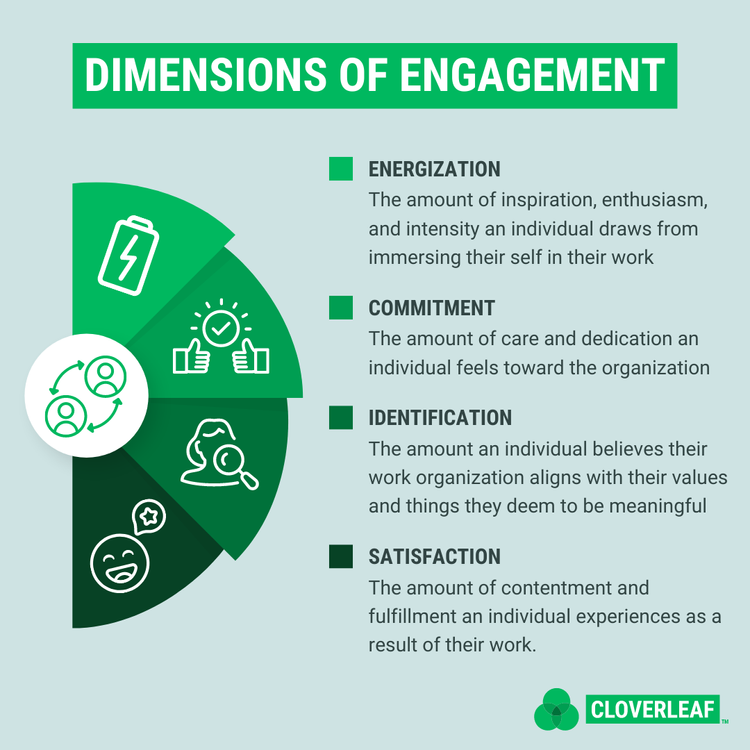
This baseline for measuring engagement helps increase understanding so that you can track whether certain engagement metrics are increasing or decreasing across time.
The second set of metrics entails the predictors (also called drivers) of engagement. Or, in other words, the actual levers that are causing engagement to increase or decrease.
Across an assortment of organizations that offer employee engagement tools, their internal research suggests that some of the most critical drivers of engagement include excellent leadership, career-growth opportunities, non-toxic work environments, and collaborative teams.
11 Effective Drivers Of Engagement In The Workplace
High-Quality Leadership
Leadership & Career Development Opportunities
Meaningful Work
Work-Life Balance
Inclusion & Belonging
Healthy Work Cultures
Recognition
Feedback
Autonomy & Empowerment
Supportive Team Members
Equitable & Competitive Compensation
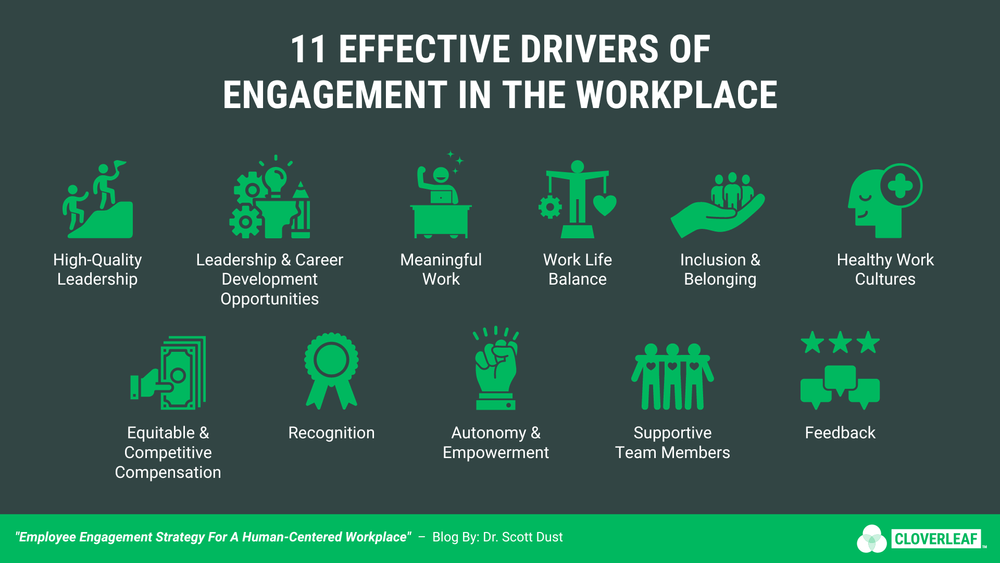
SIDE-BAR: Any guesses on which predictor is consistently one of the most impactful drivers of engagement? Supportive leadership.
Employees that have leaders or managers that are respectful, transparent, and supportive is the clear winner.
Additionally, a recent predictor is a significant consideration concerning an employee engagement strategy: time affluence.
Post-pandemic, employees are beginning to express that they want more than work-life balance but also tools (e.g., high-quality virtual meeting tools) and systems (e.g., work-from-anywhere or work-anytime) that facilitate employees’ ownership of when and where they’ll work.
7 Ideas To Create An Employee Engagement Plan
1. Provide a leadership development program for managers and supervisors to assist with upskilling leadership within your organization.
2. Implement opportunities for personal development in the workplace to strengthen leadership and career skills by supporting training unique to team members’ roles.
3. Provide coaching opportunities for employees to help them grow personally and professionally.
Cloverleaf serves daily Automated Coaching™ tips that help employees increase self-awareness and emotional intelligence, fostering a physiologically safe workplace and team effectiveness.
4. Offer remote work options, including the ability to work from home or other remote locations and flexible schedule options, to empower employees to manage their work and personal commitments better while still achieving their job responsibilities.
5. Facilitate open communication among employees by implementing the following strategies:
Encourage two-way communication between management and leadership and among teammates.
Practice transparency by sharing information about the organization’s goals, plans, and performance to build trust and understanding.
Encourage collaboration by creating opportunities for cross-functional teams, project-based work, or group problem-solving.
Use technology like Slack and 15Five to facilitate faster and easier communication.
Celebrate teamwork by recognizing and rewarding teams and individuals who work together, support one another, and model your organization’s values.
Work hard to clearly communicate the organization’s mission and values to employees and ensure that their work aligns with these goals.
Facilitate regular, timely, and constructive feedback.
6. Recognize and reward employees for their contributions to the organization. Use a tool like Bonusly that includes both formal and informal ways to acknowledge and appreciate team members.
7. Provide employees with equitable and competitive compensation packages aligned with their skills and experience. Regularly review and adjust compensation packages to ensure they remain competitive in the marketplace.
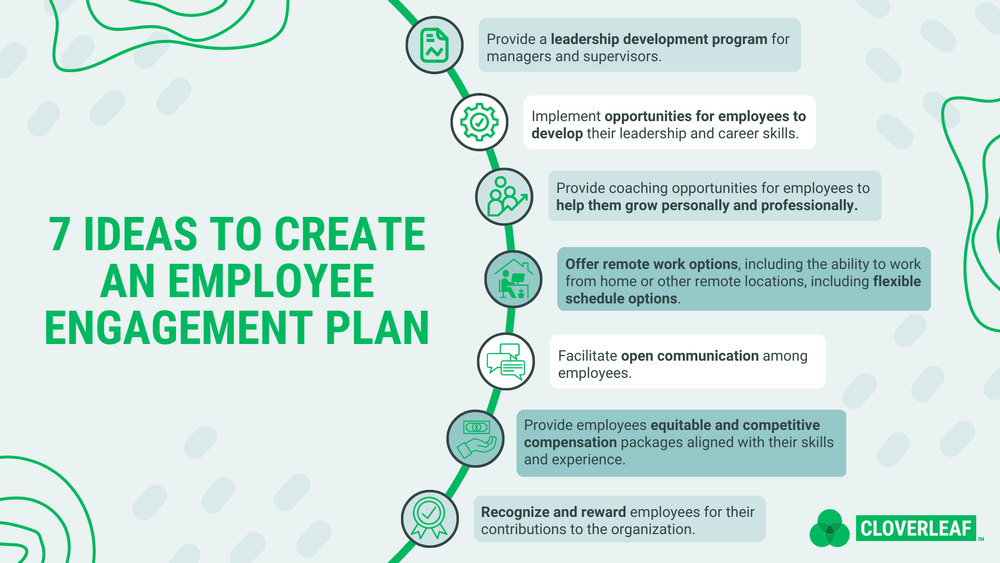
These characteristics of the future workplace experience represent trends changing employee expectations of their leader and teammates. Employers can prevent toxicity and promote an effective employee engagement strategy by actively implementing a plan that values teamwork and collaboration.
Critical Components For A Successful Employee Engagement Strategy
Implementing an employee engagement strategy is crucial for organizations; however, there are three key components to ensure it is effective and successful:
Surveying Employees
Interpreting The Results
Acting On Results
This process should be ongoing, focusing on identifying positive and negative contributors affecting engagement and the measurable next steps based on the results. Doing so can better ensure that the organization continuously improves its engagement strategy and fosters a human-centered workplace.

When And How To Survey Employees
Organizations typically use engagement surveys in one of three ways:
Annual Benchmarks
Ongoing Pulse
Initiative-Based
1. Annual Engagement Surveys
These surveys tend to be lengthy, in-depth, and have a mix of quantitative (e.g., 1 = strongly disagree, 5 = strongly agree) and qualitative (e.g., open-ended text response) questions. These surveys give organizations a broad annual benchmark for how they’re doing.
2. Pulse Surveys
These are typically around five questions and are pushed out to participants from weekly to monthly. These shorter surveys tend to have higher participation when the questions are quantitative and straightforward.
The benefit of the pulse survey approach is that it ensures organizations know what’s happening throughout the entire year, in the moment. This allows organizations to make adjustments promptly. Tools like Officevibe can assist leaders in making this process easier.
3. Initiative-Specific Engagement Surveys
These use customized questions relevant to the initiative to ensure immediate and targeted feedback.
Organizations will inevitably change as their industry evolves or objectives are rolled out as strategies. Planning a well-timed engagement survey in coordination with this effort can help keep things on track.
How To Interpret Employee Engagement Survey Results
Analyze the data to figure out which predictors are changeable or worth changing. The goal should be to understand the most influential predictors of low engagement scores. Some engagement tools automatically conduct these analyses.
When interpreting these results, it’s best to only focus on one or a few key metrics at a time. Changing too much too quickly will make it challenging to understand what is working or not and how best to apply the findings within your employee engagement strategy.
What To Do With The Results
One of the quickest ways to see employee engagement survey participation drop is to fail to act on the results. It’s best to be transparent about the results, show how the results compare to similar organizations, and communicate a clear action plan on what they will do to improve specific metrics.
These communications tend to work best when leaders add a narrative that can help interpret the results at the organizational level. Then managers can use the results at the team level or during one-on-ones’ with direct reports.
Perhaps, one of the biggest challenges with engagement tools is that they are heavily weighted towards diagnosis but not prognosis.
Engagement tools are great at understanding what’s wrong, but they aren’t built to help organizations understand what to do about it. Typically, these solutions must be customized to address the organization’s specific context.
By understanding when and how to conduct employee engagement surveys, interpreting the results, and taking action based on those results, organizations can gain valuable insights to improve the plan continuously.
3 Common Questions and Concerns About Employee Engagement
Should we use an engagement tool service or do it ourselves?
Although engagement tools can be expensive, the key benefit is that they ensure the engagement responses are anonymous. If an organization sends out a survey to employees, the employees will inevitably assume that their responses can be tracked back to them individually.

No matter how much an organization promises that the responses will be confidential, it isn’t likely to land with employees. Relatedly, engagement tool services typically set a threshold for which there must be a certain amount of responses before data are revealed. This policy can increase employee response rates since they know they won’t be exposed if they make a qualitative comment in a survey that could be traced back to them individually.
Another critical consideration is whether the engagement tool service will allow you to view data at the individual level or not. Sometimes engagement tools only give access to the aggregated reports, which makes it hard for organizations to understand the nuances of their findings. For example, aggregated findings can hide outlier data that could be the source of a brewing issue or accidentally cover up the fact that the data distribution is bi-modal, with half the employees rating low and the other half rating high on a particular metric.
What should we do if the employee participation rate is low?
One of the most important things organizations can do is have senior leadership express why surveys are being implemented and how they will be used to make employee-friendly changes.
Also, as previously mentioned, organizational leaders must act on the data. If they don’t, employees will perceive that their participation is not worth the time.
Additionally, organizations should dial in the length and cadence of the surveys. The longer and more often, the lower the participation.
Low participation rates are problematic. Without a complete sample representation, the results might be inaccurate or directly signal that the employees are disengaged.
How are machine learning and artificial intelligence being used in engagement surveys?
Although some organizations are starting to implement sophisticated algorithms that help deliver suggestions to users of engagement tools, it’s not quite reached the threshold of being considered machine learning.
Machine learning would entail outputs from the system being automatically reintegrated into the algorithm so that it updates (i.e., “learns”) in real-time, generating better and more tarted results on the next iteration.
Along those lines, organizations should not assume technology can solve engagement issues.
The recommendation here is to take a “tech-first approach,” which recognizes that people can’t process data with the same accuracy and efficiency as machines, so using technology to be the front line that helps direct people’s attention is worthwhile. Nonetheless, people and social systems are complicated, and it takes people capable of critical thinking and intuition to ensure the direction is ideal.
Conclusion
Employee engagement is a crucial aspect that organizations cannot afford to neglect. Ignoring engagement can lead to unhappy and unproductive employees, resulting in a detrimental impact on the overall performance of the organization. But why settle for mediocre results when it’s possible to achieve greatness? By understanding the importance of employee engagement, organizations can create a roadmap for success by identifying what to measure, how to measure it, and a plan for taking action on the results.
Without a strategy to engage your team, it will probably never happen. Using a plan while measuring what is effective will help prevent guesswork and provide clarity for your team.
In short, investing in an employee engagement strategy is not a luxury but a necessity for organizations that want to achieve their full potential and stay competitive in today’s market.

